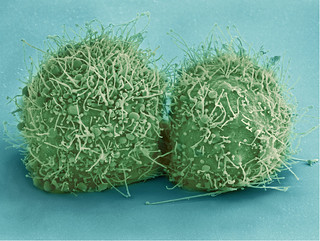Course Description
This course examines the role of science and medicine in the origins and evolution of concepts of race, sex, and gender from the 17th century to the present. We analyze biological, medical, and anthropological studies and how they intersect with historical, social, political, and cultural ideas about racial, sexual, …
This course examines the role of science and medicine in the origins and evolution of concepts of race, sex, and gender from the 17th century to the present. We analyze biological, medical, and anthropological studies and how they intersect with historical, social, political, and cultural ideas about racial, sexual, and gender differences. The course follows lecture/discussion format.
Learning Resource Types
Readings

An image of a just-divided HeLa cell as seen under a scanning electron micrograph. HeLa is one of the most commonly used human cell lines in research. The cell line was derived from cancer cells from an African-American woman, Henrietta Lacks, in 1951, without her consent and with no compensation. (Courtesy of NIH, Credit: National Center for Microscopy and Imaging Research. Used with permission. License CC BY-NC.)










